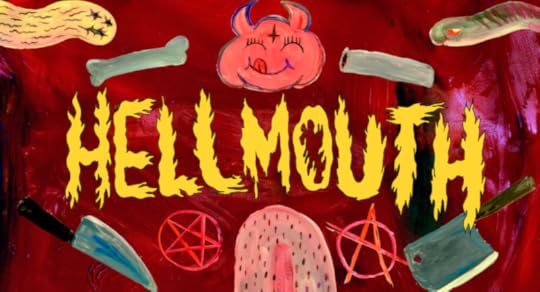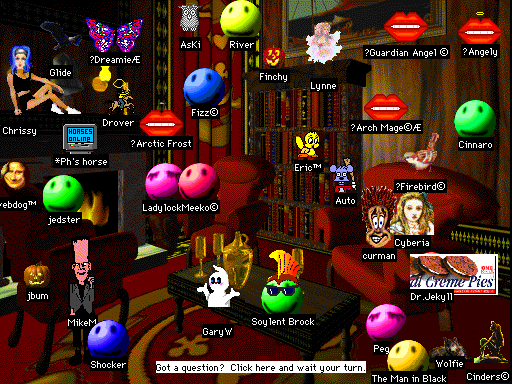Kill Screen Magazine's Blog, page 240
August 18, 2015
Here are the six awesome sounding games debuting at this year's Fantastic Arcade
Six new games will get their own original arcade cabinets and premiere for play at this year’s Fantastic Arcade, an annual exhibition of videogames set during the final four days of Fantastic Fest in Austin, Texas. The curated line-up this time around is a motley collection of weird and wonderful sounding experiments ranging from hiking sims to co-op cooking games to interactive fiction/racing mash-ups.

Alea, created by Gardenarium artist Paloma Dawkins, along with Cale Bradbury and Calia Thompson-Hannant, is described as a “hiking simulator & experience of infinity” meant to remind us of the ever-present light and dark surrounding us. “Just don’t die and you should be okay,” states its Fantastic Arcade page. If it’s anything like the trippy pastel journey of Gardenarium, then this one could be a special sight to see.
"My morning ritual is pretty simple: I check my phone and scream."
CRAP! No One Loves Me is from the always absurd Arcane Kids, creators of Zineth and Perfect Stride. It’s described only as a “daily affirmation & multiplayer coffin bobsledding journey into the afterlife,” with the following caption for all to ponder: “My morning ritual is pretty simple: I check my phone and scream. Then I crawl into my coffin, it’s all warmed up… let’s go for a ride.”
Arcane Kids are known for their hyper aware approach to internet kitsch, social media, and technology both old and new—their official website boasts a ‘90s style guestbook and their most recent work, the nightmarish Sonic Dreams Collection, incorporates text messaging and home video-style recordings captured in-game.

Hellmouth is a cooking game where your guest of honor is Satan himself. It’s created by BARFCADE host and Food Party star Thu Tran and Ivan Safrin of Cleveland Games. If the name didn’t give it away, the BARFCADE Jam from last year challenged participants to create competitive games involving food, cooking, and… vomit. Expect Hellmouth to not only be gross, but full of occult weirdness too!
Hoky comes from Kitty Calis and Jan Willem Nijman of Action Henk and Nuclear Throne fame, respectively. All we know is it’s a 2-4 player arcade-action game “on ice.”
Then there’s Risky Bison, a game about “managing the financial affairs of a herd of buffalo,” which sounds about as exciting as Justin Smith’s previous work, the infamous Desert Golfing. By that I mean, it’ll probably be riveting. Actually.
Strawberry Cubes, Hot Date, GNOG, and more
Finally, there’s Wheels of Aurelia from the two-person team Santa Ragione, who previously worked on Mirrormoon EP and FOTONICA. Wheels of Aurelia is about a “restless woman” named Lella as she drives along the famous Via Aurelia road on Italy’s western coast in the 70s. It’s described as a combination racing game and interactive fiction.
The full list of Fantastic Arcade games includes Strawberry Cubes, Hot Date, GNOG, and more.
Check out the full Fantastic Arcade line-up on its official website.
The NSA Playset is trying to democratize surveillance using the aesthetic of child's play
Would that surveillance practices were reversible: we’d have a solution to the past decade’s revelations on our hands. But they aren’t and we don’t. Surveillance is more than a series of practices; it is a force with a momentum of its own and the turning radius of a cruise ship. Consequently, the democratization of surveillance takes on some funny forms, one of which is Michael Ossman’s NSA Playset project.
Inspired by the NSA’s ANT Catalog, which was published by Der Spiegel in 2013 and described a variety of surveillance tools, Ossman invited security researchers to make their own versions of the items in the catalog. “Many of the capabilities described in the ANT catalog are things that we in the information security community already know how to do to some extent,” Ossman wrote in a 2014 blogpost, “and every one appears to be something that we can build with off-the-shelf or open source hardware and software.” Thus far, the NSA Playset consists of fourteen items, for which the code and instructions are listed online.
While these instructions are on the Internet for just about anyone to use, the NSA Playset’s intention is not to get everyone and their best friend spying. Rather, as its website puts it, “we hope the NSA Playset will make cutting edge security tools more accessible, easier to understand, and harder to forget.” Seeing as these tools are not going to disappear, the only way to appreciate and discuss their power is to replicate them. This is the cruel irony of surveillance: spy tools simply beget more spy tools.
Come up with a clever play on NSA names
The NSA Playset is not a game, but that hasn’t prevented Ossman from having a little fun. All submissions to the Playset are required to have a silly name. “If your project is similar to an existing NSA ANT project,” the project’s documentation reads, “you can come up with a clever play on that name.” (For the less inspired, Ossman also recommends this handy .) Moreover, the NSA Playset’s documentation and Ossman’s conference presentation feature childlike scrawling and drawings of kids using the devices. This is a new visual language for surveillance. Whereas the Snowden leaks were rife with bureaucratic PowerPoint slides, Ossman’s work has an altogether more democratic aesthetic. The Playset’s visuals are in keeping with the project's mission; they suggest that anyone and everyone can understand what these tools actually do. This is surveillance for everyone, because the surveillance of no one is apparently no longer an option.
[H/T Ars Technica]
Head out to sea with a charming folktale about burly men on an adventure
Sometimes going out into nature just isn’t enough for a man. Sometimes, he wants to explore further and live a real adventure. Sometimes—nay, all the time—I want to witness that adventure in Burly Men at Sea.
Burly Men at Sea is a brainchild of David and Brooke Condolora (aka Brain&Brain), the pair who previously created the delightful adventure game Doggins. It is the story of three burly, bearded fishermen who grow tired of their daily routine and decide to do something truly extraordinary. Further narrative details are hard to come by, though Brain&Brain have explained that “you play as storyteller and wayfinder, shaping the narrative around the characters through interaction with their environment.” Thus, insofar as the narrative is largely a product of your choices, it cannot really be described in advance.
The game’s visuals, however, can be described, so let’s do just that. Burly Men at Sea uses crisp vector art rendered in blues, greens, yellows, oranges, and browns. “I’m using the same technique of limiting colors as with Doggins,” Brooke Condolara explains on the game’s devblog, “though it had a far more limited palette.” In the game’s trailer, the characters move with a calculated awkwardness, like their limbs were cardboard cutouts attached to their bodies with pushpins. The net effect is that the game feels like it has been built out of the shingles that cover a cozy Scandinavian cottage.

Speaking of housing, the Condolaras recently announced that they would be heading out to work on a farm outside Portland in September. “This cuts our expenses significantly, gives us some good hearty work away from screens, and it’s exactly the sort of quiet adventure we love,” they wrote on their devblog. “And hey, as far as we know, we’ll be the first indies to fund a game with farm work.” This funding approach may not catch on in the game world, but it seems fitting for Burly Men at Sea. There is always further exploring to do—that is what the titular burly men do, and that is how Brain&Brain will bring them to us.
Burly Men at Sea is currently in the midst of its Steam Greenlight campaign and due to be released in late 2015.
Behind the scenes at a major esports event
What does it take to make the world’s biggest gaming tournaments run?
We literally can't stop watching animated GIFs of this guy doing regular things
You'll watch a looped GIF of this man doing mundane things for longer than you should
Humqn Fishbowl is a mysterious and oddly mesmerizing game we can't stop looking at
What Command & Conquer gets wrong about religion
How the venerable strategy series mutates real-world faiths.
In The Jimi Hendrix Case, only Jimi Hendrix can solve Jimi Hendrix's murder
He’s Hendrix, she’s Hendrix, you’re Hendrix, I’m Hendrix.
Galak-Z reminds us that nostalgia can be a force for good
A game built on 80s anime feels like a thoroughly 2015 game.
August 17, 2015
The weird abandoned spaces of virtual worlds
I went to college in a rolling campus up on a forested hill, where the woods served as a playground on bored Sunday evenings, and frequent late-night power outages meant sneaking into empty administrative buildings, or finally searching for that deserted amphitheater tucked away in the forest, resigned to wood rot in its abandonment.
There were days I would walk across campus and not see a single other student anywhere on the winding roads, dirt trails, or cement plazas of the school. But even then, the emptiness of these real, physical spaces rarely felt as eerie as that of the abandoned digital spaces hidden away in the numerous outdated games, empty graphical chat programs, and virtual worlds of the web.
we’re able to see the strangeness of the spaces themselves
See for yourself. Fusion's Patrick Hogan recently dove into the empty private islands of virtual world Second Life, specifically those purchased by universities to serve as digital counterparts of their actual campuses. Of course, that was a long time ago. These spaces are now completely devoid of visitors (if they were ever used in the first place) and left to sit as digital artifacts, unchanged by time.
When these virtual worlds are vacated of human-controlled avatars and even non-playable characters, we’re able to see the strangeness of the spaces themselves: how uncomfortably wide-open and empty its rooms are, the uselessness of various virtual furnishings, maps and signs addressing no one, and oddities like the thing below, which was perhaps once some kind of inside joke, but exists now without context or explanation.

Image courtesy Patrick Hogan - Fusion.net
A few years ago, I also dove back into a virtual space I used to occupy in my youth: a two-dimensional graphical chat program called The Palace. Rooms weren’t necessarily bustling with life back then, but they were sometimes. When I used it actively, I wouldn’t spend too long in an empty room because I knew there would be people in other parts of The Palace that I just had to find. I’d keep clicking through.
what new kinds of digital ruins will be left in the dust
Returning to it so many years later, I decided to linger in those empty spaces and found something similarly absurd and eerie in its flat, pre-rendered backdrops: couches and beds that didn’t make sense for the default floating emoji users would spawn as, outlines of broken links that should’ve lead out to other servers—digital dead ends in an ugly red mansion.
I even found a few rooms that I don’t recall being there before, deteriorated walls and dirty floors making them look like they’d actually aged along with the outdated software, though that is of course absurd. They were most likely added sometime after I’d left, which is actually a strange thought in itself.

Perhaps even more fascinating than the abandoned parts of these programs are the areas that are still full of life. Several active Second Life users have taken to the comments in the Fusion piece to defend the active areas of the Linden Lab-powered universe, showing off the more modernized digital spaces of the program and linking out to resources about the actual educational communities that thrive there.
With so many companies working on their own type of virtual reality hardware, I wonder if software like Second Life (which is nearly ancient in internet years) will start to go mainstream again, or if something newer and fresher will pop up in its place. I wonder too, if and when people start to move away from some virtual worlds and into others, what new kinds of digital ruins will be left in the dust for the internet archaeologists to dig up.
The records of Super Hexagon's soundtrack may make you rethink the whole game
Spin it round and round, but avoid the sharp edges.
Kill Screen Magazine's Blog
- Kill Screen Magazine's profile
- 4 followers



